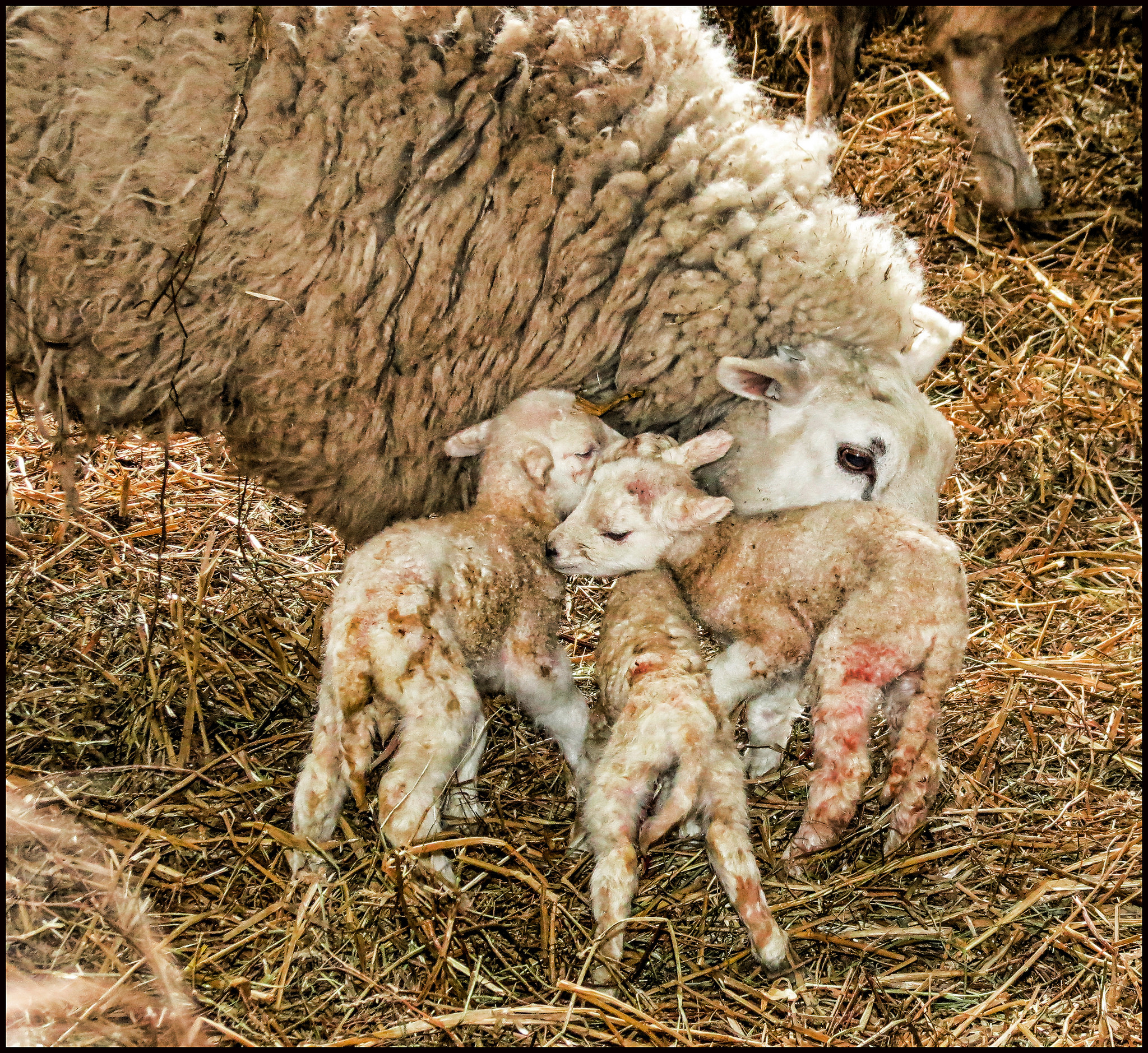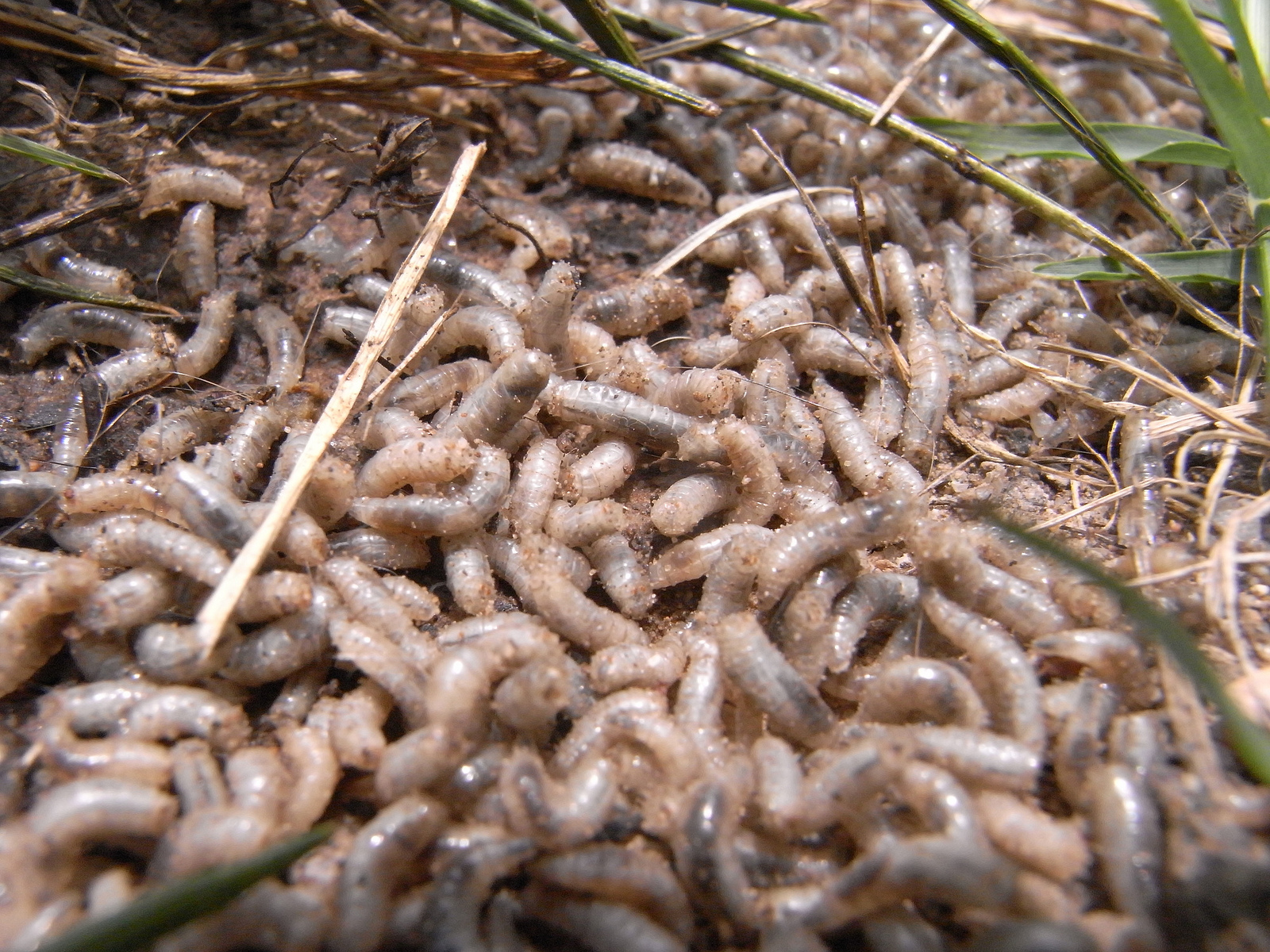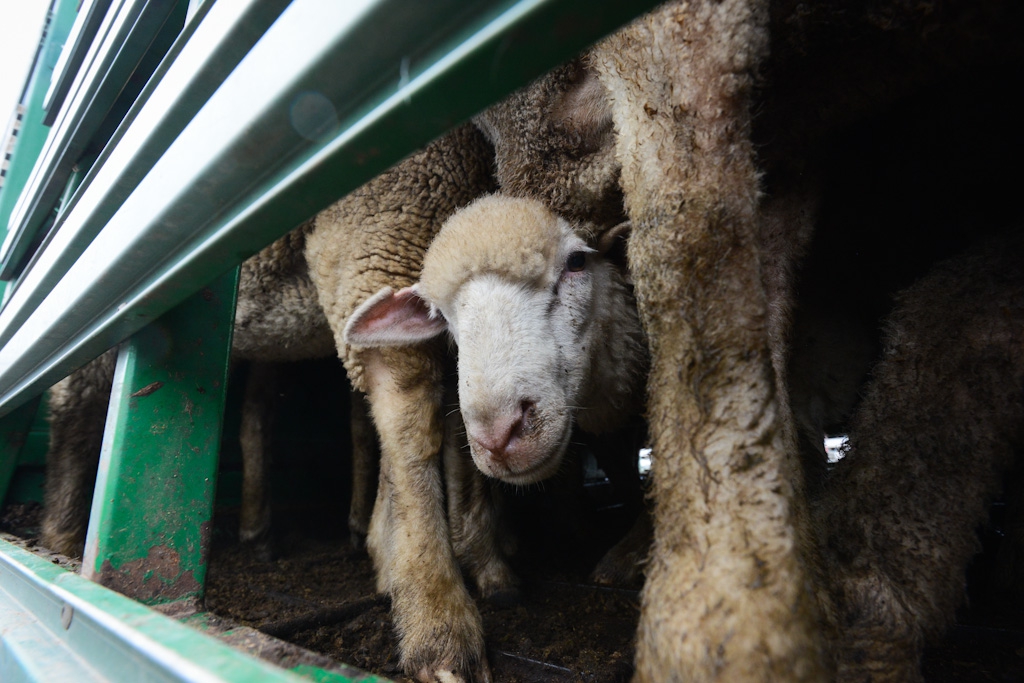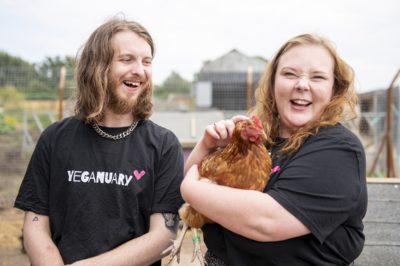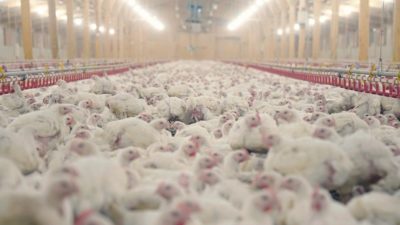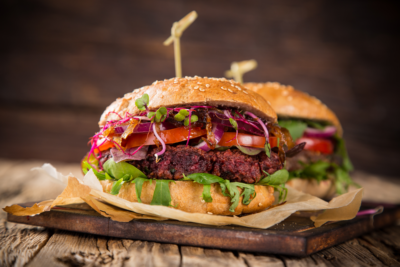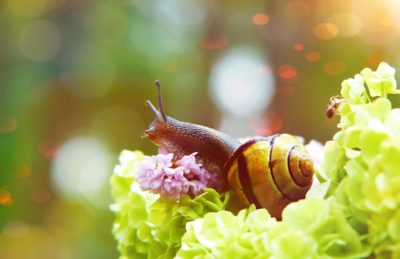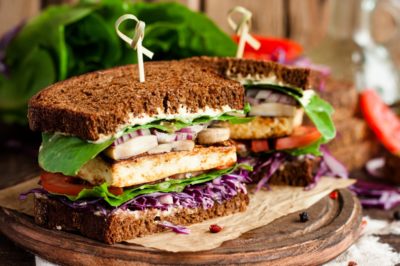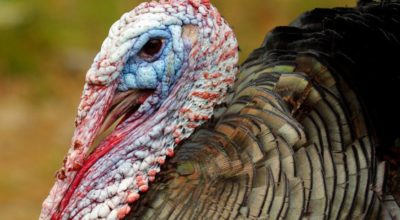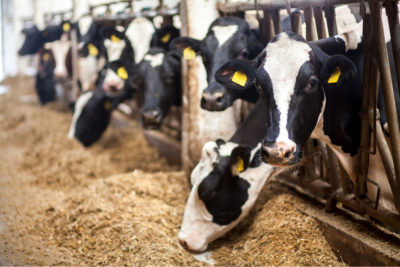In the UK, sheep are farmed for their meat, milk and wool. Keep reading to learn about the cruelty of lamb and sheep farming.

Sheep are often misunderstood and derided for being ‘stupid’ simply because they flock together for protection, in the same way as some bird and fish species.
In fact, when they feel safe and secure, sheep will show that they are bright and inquisitive, loving and gentle, and every bit as cheeky as goats. It’s just that on farms, they are not given the opportunity to be themselves.
On sanctuaries, however, it’s a different story!
What is lambing?
Naturally, ewes would give birth to a single lamb. However, through human manipulation, many sheep are now selectively bred to produce two or even three lambs, which is intended to increase the industry’s profitability.
But ewes have just two teats, so a third lamb will either be given to a different ewe, bottle fed, or force fed through a tube into their stomachs.
Have you ever wondered how all the ewes give birth around the same time?
This is no natural cycle, it’s done deliberately to ensure lambing takes place at a convenient time for the farmer, and to force ewes to give birth sooner to catch the higher prices for the new season lamb market.
To do this, hormones are either implanted under the skin or a sponge is inserted into the vagina.
Insemination may be done artificially, too, with the semen collected from a ram using an electric probe, and then inserted into the female who may be strapped to a rack. It’s distressing and can be painful for both.
If ewes bred naturally, they would give birth in spring but too many are now forced to give birth in the dead of winter. Millions of lambs die each year at birth or soon after due to exposure, disease or malnutrition.
Living conditions
Most sheep in the UK are farmed outdoors, exposed to extreme weather conditions with little or no shelter from the elements, and receive little in the way of individual care.
Some are reared inside zero-grazed factory farms all their lives, but housing is generally used only during the lambing season and for the fattening of lambs and milking sheep.
Housing ewes at this late stage in their pregnancy is stressful as they would naturally prefer isolation prior to giving birth. The frustration and anxiety of their confinement and reduction in feeding often causes them to pull at their wool and bite their pens.
Do Sheep suffer?
Because it is common to see sheep in fields and on hillsides, we think their lives are rather enjoyable.
But we tend not to be on those hillsides when they flood, or when the sun’s heat becomes unbearable and there are no trees to shelter beneath, or in the depths of winter when snow makes finding food impossible.
On top of this, sheep suffer a host of health problems and are given an array of drugs to try and prevent or manage these conditions and diseases. These diseases include scald, footrot, blowfly strike, scrapie, mastitis, lameness and even blindness.
Lameness is crippling but sadly commonplace on British sheep farms. It is often caused by footrot or scald, both of which can be tackled through vaccination or treatments, but since they are contagious, sheep may be killed instead.
Mastitis is a painful infection that causes the udder to harden and inflame. Again, sheep can be killed if they do not respond well to the treatment.
Blowfly strike can affect sheep (and rabbits) in the warmer months. The flies are attracted to the rear of the animals, often because of moisture in the folds or because they are dirty there.
The flies lay their eggs which hatch into maggots very quickly and eat their flesh. It’s a terrible way to die, and around 12,000 sheep succumb every year to flystrike.
Lambs may have their tails docked to try to prevent it, either by using a rubber ring to restrict blood flow until the lamb’s tail falls off, or through use of a knife or docking iron. Again, pain relief may be used but it is not mandatory. Even so, fly strike is a routine problem for sheep.
Are Lambs Castrated?
Castrating male lambs is common in the UK, and is done to prevent them from breeding, reduce aggression, and make them easier to handle.
Rubber rings or bands are fitted tightly around the neck of the scrotum. This cuts off the blood supply to the testes, causing them to die and drop off – a process that causes significant pain for the lambs.
There are other methods – crushing or surgical removal. Pain relief may be used during the actual procedure but it is not mandatory and so is not always used.
How is wool produced?
In the past sheep shed their coats naturally and farmers would collect their wool for use, but today’s selectively-bred sheep are unable to moult, and now must be sheared so that they don’t overheat.
Sheep are usually sheared in the early summer months or, on occasions, before being housed in the winter.
The shearing process involves holding down the sheep which is a stressful procedure for these sensitive animals. Shearers are usually paid by the volume of wool they collect, rather than by the hour, which encourages fast work and little regard for the welfare of the animals.
As PETA’s undercover footage from the UK shows (video link below), sheep are often roughly handled, cut and even deliberately beaten during the shearing process.
How are sheep slaughtered?
Whether farmed for wool, milk or meat, they are all slaughtered. Sheep are transported long distances to slaughter, and this causes them much stress and injury.
They frequently suffer from heatstroke and dehydration as a result of overcrowding, lack of ventilation and no access to water.
In September 2012, 40 sheep were killed after inspection at Ramsgate Port in Kent. Vets found that one had a broken leg, another was sick and more than 40 were severely lame. The RSPCA said that none of the animals were able to reach water.
When are lambs slaughtered?
Most lambs are slaughtered at between four and six months of age. More than 15 million sheep are slaughtered in the UK each year.
Not all sheep are stunned at slaughter in the UK. Those that are will most likely have an electric current pass through their brains, but some are shot with a captive bolt gun.
Neither method is guaranteed to be effective, and those killed without stunning will have their throats cut while fully conscious.
This investigation shows what happens to sheep in a non-stun slaughterhouse.
The inner life of sheep
Sheep are highly social animals. If they become separated from their flock, their heart rates and levels of stress hormones increase. The flock means security and safety.
Ewes nuzzle their lambs and mother and baby call to one another to reassure and to stop the youngster getting lost. If either becomes isolated, the vocal patterns change. And when stressed, they show signs of depression that we understand ourselves, such as hanging their heads.
Far from being ‘stupid’, sheep are intelligent and thoughtful animals, able to recognise one another and the faces of people, even if they have been absent from their lives for a number of years.
Research has also shown they have good spatial understanding, can map out their surroundings mentally and may be able to plan ahead. One researcher said: ‘In our tests they performed at a level very similar to monkeys and humans in the initial learning tasks’.
Quite simply, if we don’t understand them, it may well be that we’re the ones lacking intelligence.
It’s absolutely clear that lambs love to play! They leap, and twist and gambol in the most expressive demonstration of joy.
And rescued sheep don’t lose that love of life when they grow older either. We think every day should be Hug A Sheep Day!
Why not choose compassion with every meal and try vegan with us? Our free 31-day challenge includes cookbooks, resources and tips to help you every step of the way.

